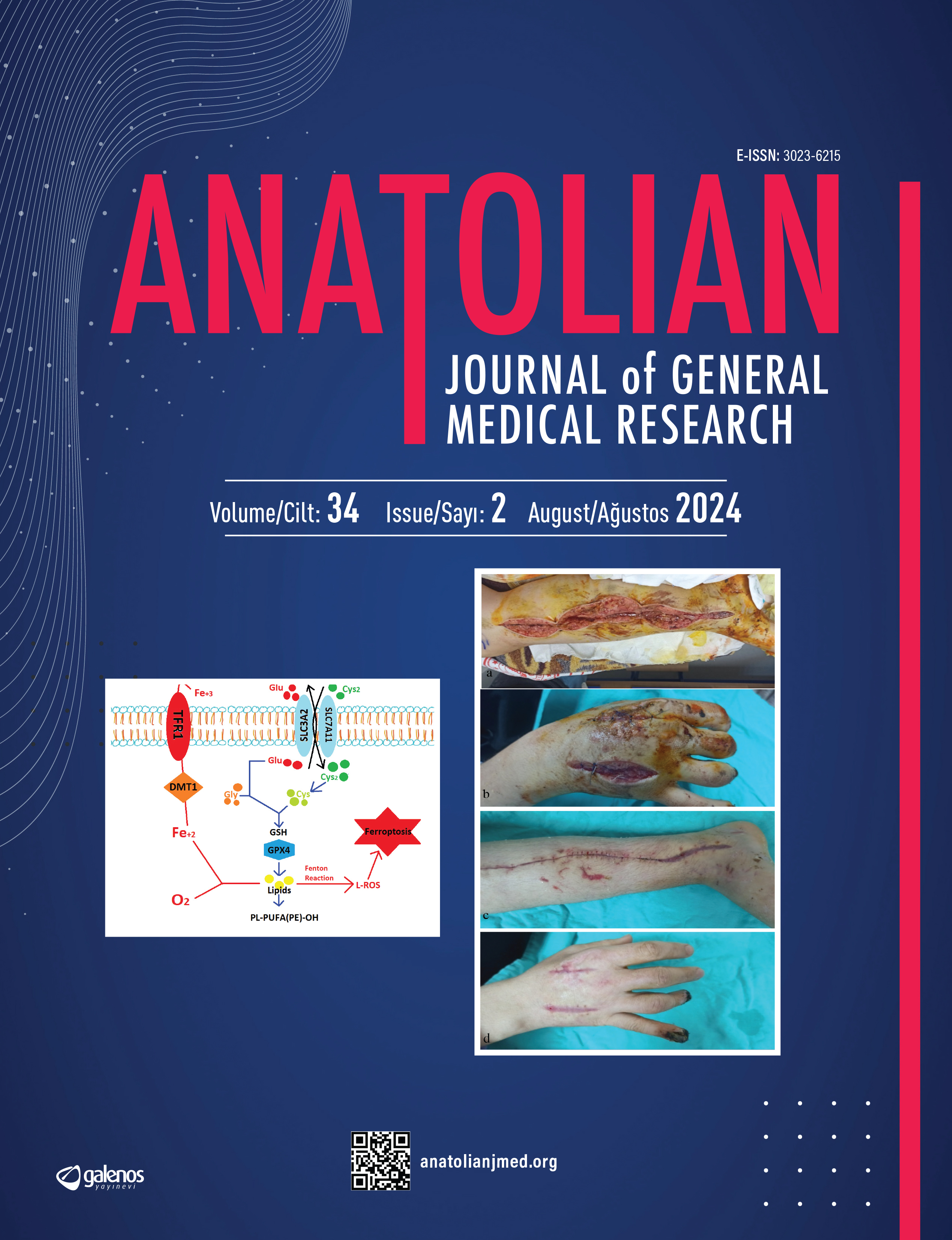








Diagnostic Effectiveness of Muscle Biopsy in Neuromuscular Diseases; Four Years of Retrospective Critical Review
Bahattin Erdoğan1, Sevgi Yimenicioğlu2, Coşkun Yarar3, Erdener Özer4, Kürşad Bora Çarman31Department of Pathology, Eskisehir State Hospital, Eskisehir, Turkey2Department of Pediatric Neurology, Eskisehir State Hospital, Eskisehir, Turkey
3Department of Pediatric Neurology, Eskisehir Osmangazi University (ESOGU), Eskisehir, Turkey
4Department of Pathology, İzmir Dokuz Eylül University, İzmir, Turkey
INTRODUCTION: Most of the neuromuscular diseases are genetic and progressive so it is important to make a timely and correct diagnosis in terms of treatment guide, follow-up of the progression and genetic counseling to be given to the family. The aim of this study is to analyze the histopathological evaluation process and results of muscle biopsies and to evaluate the contribution to the diagnosis and management decisions of the disease.
METHODS: We retrospectively reviewed the results of muscle biopsy of 160 patients between 2013 and 2017. The clinical findings, biopsy specimen adequacy, clinical preliminary diagnosis and pathology results are reviewed.
RESULTS: The pediatric cases comprise 53.8% of the total cases and 60% of the cases were male patients. 42.6% of the patients reported muscle weakness. Clinical preliminary diagnosis for muscle biopsy was myopathy/dystrophy with 60.1% at the first order. Histologic interpretation revealed 71.2% myopathy/dystrophic changes, 9.4% neuropathıc changes. In 40% of total cases, the enzyme and immunohistochemically staining could be used for further diagnose or to exclude some diseases and allow molecular studies to be planned.
DISCUSSION AND CONCLUSION: Muscle biopsy is indispensable for creating an etiologic diagnosis. Histopathological examination in the investigation of neuromuscular diseases; is an important component of the prognostic prediction and therapeutic planning as well as diagnostic data. The efficiency of the histopathological study is directly proportional to the quality of the biopsy specimen, and clinic pathologic communication during these procedures is important. Pathologist’s proactive role in the pre analytical process is important in terms of patient safety and timely, accurate results.
Nöromüsküler Hastalıklarda Kas Biyopsilerinin Tanısal Etkinliği; Dört Yıllık Geriye Dönük Eleştirisel İnceleme
Bahattin Erdoğan1, Sevgi Yimenicioğlu2, Coşkun Yarar3, Erdener Özer4, Kürşad Bora Çarman31Eskişehir Devlet Hastanesi, Patoloji Bölümü, Eskişehir2Eskişehir Devlet Hastanesi, Pediatrik Nöroloji Bölümü, Eskişehir
3Eskişehir Osmangazi Üniversitesi (ESOGÜ), Pediatrik Nöroloji Bölümü, Eskişehir
4İzmir Dokuz Eylül Üniversitesi, Patoloji Ana Bilim Dalı, İzmir
GİRİŞ ve AMAÇ: Nöromusküler hastalıkların çoğu genetik geçişli ve ilerleyici seyirli olup, tedavinin yönlendirilmesi, progresyonun takibi ve aileye verilecek genetik danışmanlık açısından zamanında doğru tanı konulması önemlidir. Bu çalışmanın amacı, kas biyopsilerinin histopatolojik değerlendirme süreç ve sonuçlarını analiz edip, hastalığın tanı ve yönetim kararlarına katkısını değerlendirmektir.
YÖNTEM ve GEREÇLER: 2013-2017 çalışma döneminde laboratuvarımızda değerlendirilen 160 hastaya ait kas biyopsi sonuçları geriye dönük incelendi. Klinik sunumlar, ön tanı, biyopsi örnek yeterliliği ve patolojik sonuçları gözden geçirildi.
BULGULAR: Olguların %60’ı erkekti ve %53,8’i pediatrik yaş gurubuna aitti. %42,6 hastada kas güçsüzlüğü rapor edilmişti. Kas biyopsisini gerekli kılan ön tanı olarak myopati/distrofi grubu % 60,1 oranıyla ilk sıradaydı. Histomorfolojik değerlendirmede % 71,2’inde myopatik / distrofik bulgular, % 9,4’ünde nöropatik hastalık bulguları izlendi. Toplam olguların % 40'ında, enzim ve immünohistokimyasal boyamalar ile tanılar daha ileri spesifiye edilebildi ya da bir kısım hastalıklar dışlanarak moleküler çalışmaların planlanmasına olanak sağlandı.
TARTIŞMA ve SONUÇ: Kas biyopsisi etyolojik tanıyı oluşturmak için vazgeçilmezdir. Nöromüsküler hastalıkların araştırılmasında, histopatolojik inceleme; tanısal verilerin yanı sıra, prognostik öngörünün belirlenmesi ve terapötik planlamanın ayrılmaz bir bileşenidir. Histopatolojik araştırmanın verimi, kullanılan örneklerin kalitesi ile doğru orantılıdır. Numune yönetiminde tüm gerekliliklerin yerine getirilmesi için kliniko-patolojik iletişimin geliştirilmesi zorunludur. Patoloji uzmanının preanalitik süreçte proaktif rol alması hasta güvenliği ve zamanında, doğru sonuçların üretilmesi açısından önemlidir.
Manuscript Language: English
(884 downloaded)




